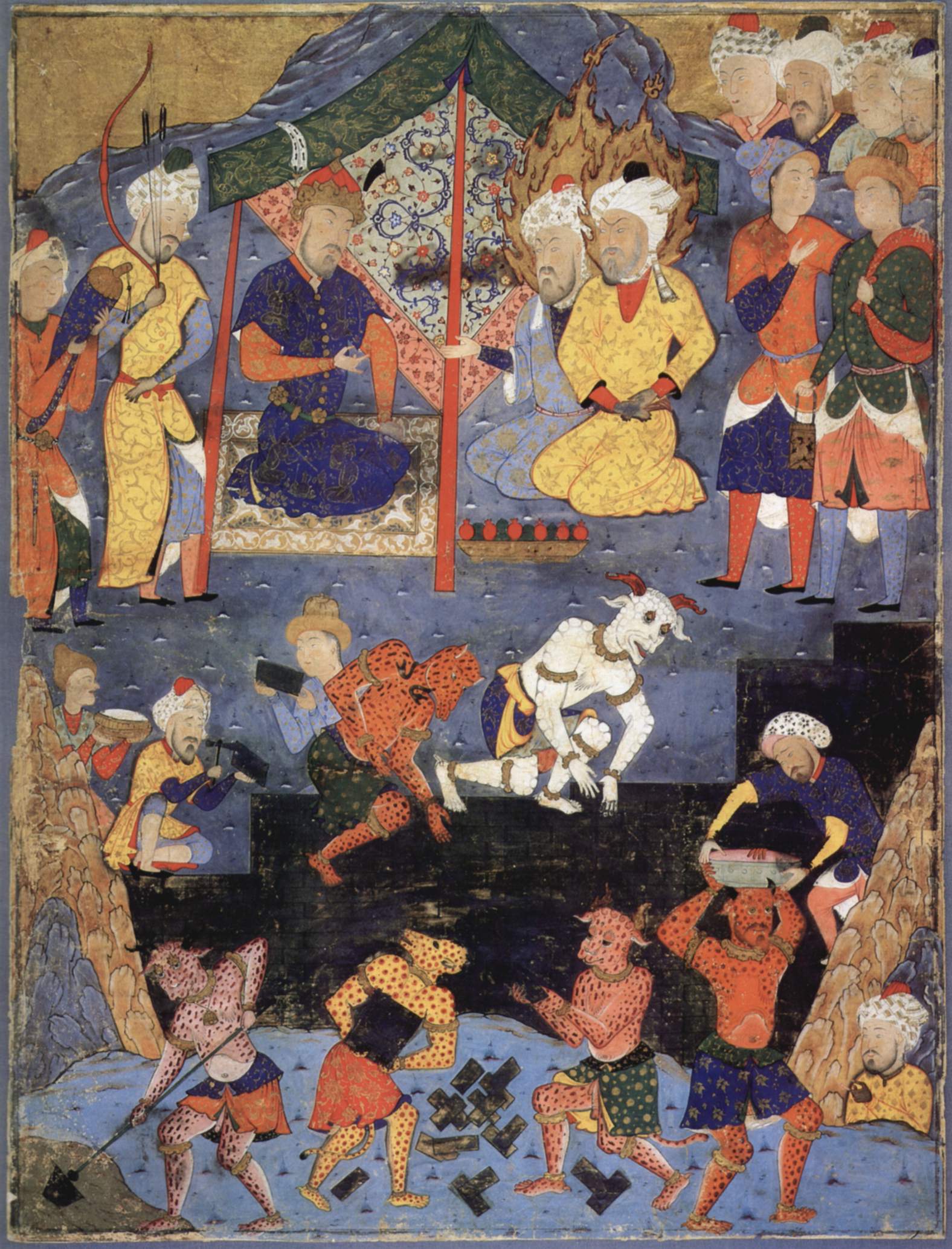
Gates of Alexander
The Gates of Alexander, also known as the Caspian Gates, are one of several mountain passes in eastern Anatolia, the Caucasus, and Persia separating the Greco-Roman world from the Persian world. They are often imagined as an actual fortification, or as a symbolic boundary separating the civilized from the uncivilized world.[1] The original Gates of Alexander were just south of the Caspian Sea, at Rhagae, where Alexander crossed while pursuing Darius III.[2] The name was transferred to passes through the Caucasus, on the other side of the Caspian, by the more fanciful historians of Alexander.
Various other passes in the Caucasus and Anatolia have been called the Gates of Alexander since at least the 1st century CE.[3] Later, the Caspian Gates were also identified with the Pass of Derbent (in modern Dagestan) on the Caspian; or with the Pass of Dariel, a gorge forming a pass between Georgia and North Ossetia–Alania. Tradition also connects it to the Great Wall of Gorgan (Red Snake) on its south-eastern shore. These fortifications were historically part of the defence lines built by the Sassanid Persians, while the Great Wall of Gorgan may have been built by the Parthians.
Alongside other motifs such as the Horns of Alexander, the Gates of Alexander became commonly associated with Alexander legends, as in the Alexander Romance, the Syriac Alexander Romance, and the Qissat Dhulqarnayn.
Geographical identifications[edit]
Medieval[edit]
In medieval world maps, the land of Gog and Magog is generally shown as a region in the far north, northeast, or east of Asia, enclosed by mountains or fortifications and often featuring a gate. It is depicted in this way on Arabian world maps starting from the 10th century, as also on the Tabula Rogeriana, an influential map drawn in 1154 by Muhammad al-Idrisi for Roger II of Sicily.[23]